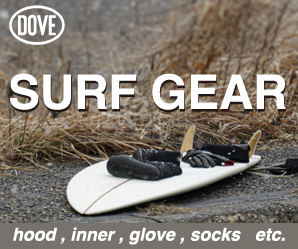Citizens’ Testing Finds 20 Hot Spots Around Tokyo
From the New York Times:
TOKYO — Takeo Hayashida signed on with a citizens’ group to test for
radiation near his son’s baseball field in Tokyo after government
officials told him they had no plans to check for fallout from the
devastated Fukushima Daiichi nuclear plant. Like Japan’s central
government, local officials said there was nothing to fear in the
capital, 160 miles from the disaster zone.
Then came the test result: the level of radioactive cesium in a patch of
dirt just yards from where his 11-year-old son, Koshiro, played baseball
was equal to those in some contaminated areas around Chernobyl.
The patch of ground was one of more than 20 spots in and around the
nation’s capital that the citizens’ group, and the respected nuclear
research center they worked with, found were contaminated with
potentially harmful levels of radioactive cesium.
It has been clear since the early days of the nuclear accident, the
world’s second worst after Chernobyl, that that the vagaries of wind and
rain had scattered worrisome amounts of radioactive materials in
unexpected patterns far outside the evacuation zone 12 miles around the
stricken plant. But reports that substantial amounts of cesium had
accumulated as far away as Tokyo have raised new concerns about how far
the contamination had spread, possibly settling in areas where the
government has not even considered looking.
The government’s failure to act quickly, a growing chorus of scientists
say, may be exposing many more people than originally believed to
potentially harmful radiation. It is also part of a pattern: Japan’s
leaders have continually insisted that the fallout from Fukushima will
not spread far, or pose a health threat to residents, or contaminate the
food chain. And officials have repeatedly been proved wrong by
independent experts and citizens’ groups that conduct testing on their own.
“Radioactive substances are entering people’s bodies from the air, from
the food. It’s everywhere,” said Kiyoshi Toda, a radiation expert at
Nagasaki University’s faculty of environmental studies and a medical
doctor. “But the government doesn’t even try to inform the public how
much radiation they’re exposed to.”
The reports of hot spots do not indicate how widespread contamination is
in the capital; more sampling would be needed to determine that. But
they raise the prospect that people living near concentrated amounts of
cesium are being exposed to levels of radiation above accepted
international standards meant to protect people from cancer and other
illnesses.
Japanese nuclear experts and activists have begun agitating for more
comprehensive testing in Tokyo and elsewhere, and a cleanup if
necessary. Robert Alvarez, a nuclear expert and a former special
assistant to the United States secretary of energy, echoed those calls,
saying the citizens’ groups’ measurements “raise major and unprecedented
concerns about the aftermath of the Fukushima nuclear disaster.”
The government has not ignored citizens’ pleas entirely; it recently
completed aerial testing in eastern Japan, including Tokyo. But several
experts and activists say the tests are unlikely to be sensitive enough
to be useful in finding micro hot spots such as those found by the
citizens’ group.
Kaoru Noguchi, head of Tokyo’s health and safety section, however,
argues that the testing already done is sufficient. Because Tokyo is so
developed, she says, radioactive material was much more likely to have
fallen on concrete, then washed away. She also said exposure was likely
to be limited.
“Nobody stands in one spot all day,” she said. “And nobody eats dirt.”
Tokyo residents knew soon after the March 11 accident, when a tsunami
knocked out the crucial cooling systems at the Fukushima plant, that
they were being exposed to radioactive materials. Researchers detected a
spike in radiation levels on March 15. Then as rain drizzled down on the
evening of March 21, radioactive material again fell on the city.
In the following week, however, radioactivity in the air and water
dropped rapidly. Most in the city put aside their jitters, some openly
scornful of those — mostly foreigners — who had fled Tokyo in the
early days of the disaster.
But not everyone was convinced. Some Tokyo residents bought dosimeters.
The Tokyo citizens’ group, the Radiation Defense Project, which grew out
of a Facebook discussion page, decided to be more proactive. In
consultation with the Yokohama-based Isotope Research Institute, members
collected soil samples from near their own homes and submitted them for
testing.
Some of the results were shocking: the sample that Mr. Hayashida
collected under shrubs near his neighborhood baseball field in the
Edogawa ward measured nearly 138,000 becquerels per square meter of
radioactive cesium 137, which can damage cells and lead to an increased
risk of cancer.
Of the 132 areas tested, 22 were above 37,000 becquerels per square
meter, the level at which zones were considered contaminated at Chernobyl.
Edwin Lyman, a physicist at the Union of Concerned Scientists in
Washington, said most residents near Chernobyl were undoubtedly much
worse off, surrounded by widespread contamination rather than isolated
hot spots. But he said the 37,000 figure remained a good reference point
for mandatory cleanup because regular exposure to such contamination
could result in a dosage of more than one millisievert per year, the
maximum recommended for the public by the International Commission on
Radiological Protection.
The most contaminated spot in the Radiation Defense survey, near a
church, was well above the level of the 1.5 million becquerels per
square meter that required mandatory resettlement at Chernobyl. The
level is so much higher than other results in the study that it raises
the possibility of testing error, but micro hot spots are not unheard of
after nuclear disasters.
Japan’s relatively tame mainstream media, which is more likely to report
on government pronouncements than grass-roots movements, mainly ignored
the citizens’ group’s findings.
“Everybody just wants to believe that this is Fukushima’s problem,” said
Kota Kinoshita, one of the group’s leaders and a former television
journalist. “But if the government is not serious about finding out, how
can we trust them?”
Hideo Yamazaki, an expert in environmental analysis at Kinki University
in western Japan, did his own survey of the city and said he, too,
discovered high levels in the area where the baseball field is located.
“These results are highly localized, so there is no cause for panic,” he
said. “Still, there are steps the government could be taking, like
decontaminating the highest spots.”
Since then, there have been other suggestions that hot spots were more
widespread than originally imagined.
Last month, a local government in a Tokyo ward found a pile of composted
leaves at a school that measured 849 becquerels per kilogram of cesium
137, over two times Japan’s legally permissible level for compost.
And on Wednesday, civilians who tested the roof of an apartment building
in the nearby city of Yokohama — farther from Fukushima than Tokyo —
found high quantities of radioactive strontium. (There was also one
false alarm this week when sky-high readings were reported in the
Setagaya ward in Tokyo; the government later said they were probably
caused by bottles of radium, once widely used to make paint.)
The government’s own aerial testing showed that although almost all of
Tokyo had relatively little contamination, two areas showed elevated
readings. One was in a mountainous area at the western edge of the Tokyo
metropolitan region, and the other was over three wards of the city —
including the one where the baseball field is situated.
The metropolitan government said it had started preparations to begin
monitoring food products from the nearby mountains, but acknowledged
that food had been shipped from that area for months.
Mr. Hayashida, who discovered the high level at the baseball field, said
that he was not waiting any longer for government assurances. He moved
his family to Okayama, about 370 miles to the southwest.
“Perhaps we could have stayed in Tokyo with no problems,” he said. “But
I choose a future with no radiation fears.”
Matthew L. Wald contributed reporting from Washington, and Kantaro
Suzuki from Tokyo.





